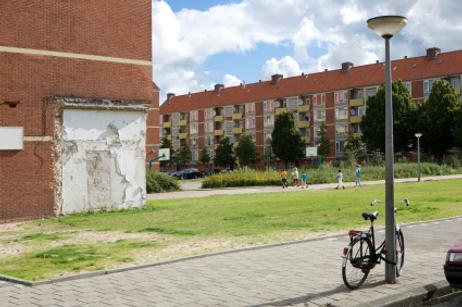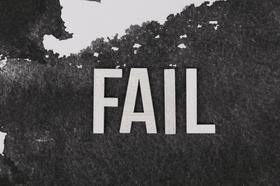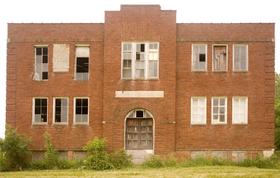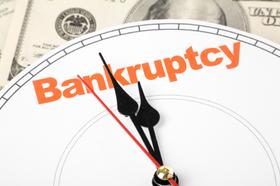As kids begin the back-to-school ritual of purchasing school supplies and packing up backpacks, students in Chicago are facing a very different type of readiness routine. Many of the students in this city are facing a new school this year because their old school was closed due to district budget cuts. What’s more, the walk to the new school may be a much more dangerous trek than the one to the old school. Students are now facing very real fears and dangers that district officials are struggling to address to the satisfaction of everyone involved.
Record-Breaking Closures
According to the , Chicago is currently in the midst of one of the largest school shutdowns in American History. The district has closed 49 schools and laid off around 800 teachers. Chicago Mayor Rahm Emanuel and district officials cite a $1 billion budget deficit as the reason behind the huge move. The budget deficit was attributed to reduced state funding, ballooning pension payments, and a significant increase in salary and benefits for district staff.
The closures sounded good on paper – at least to some. Closing schools that were not filled to the brim with students could save the district millions. Transferring those students to schools nearby allowed the school district to more effectively allocate resources. The decision appeared to be a win-win.
Consequences No One Thought Of
Except no one took into consideration that forcing children to walk a few extra blocks to school could mean the difference between safe passage and a path riddled with rival gangs and gunshots. No one appeared to think about statistics cited in that showed nearly half of the 1,054 youths murdered in the city last year were killed within the boundaries of these schools and five others originally slated for closure. Two of the schools to be closed, Elaine O. Goodlow and John P. Altgeld, saw the greatest number of murders within their boundaries, with a total of 71 young people killed between the two.
The reported that a gang expert recently testified that students forced to walk to new schools this year might have to cross gang lines to make it to their classrooms. John Hagedorn, a criminology professor at the University of Illinois-Chicago, told a federal court that the school closings could put many students “in the line of fire.”
Hagedorn also noted that a program to keep kids safe on the way to and from school, Safe Passage, would not be enough to protect students from the gunfire that could erupt in some of these neighborhoods. That was particularly true in light of the large number of students that would be impacted by the closing – too many for school officials to keep track of and keep safe.
“You’re now throwing a lot of kids through a lot of different turfs,” Hagedorn testified. “There’s no way someone walking with them will protect them from a bullet.”
The article in the Tribune also reported about a posting on Facebook by students in one of the West Side communities. Students warned in the post that anyone coming onto their turf due to a school closing would be assaulted.
This video reports on the aftermath of school closing on a special education student.
A Heartbreaking Repeat?
The anticipation of the challenges facing this new school year brings to mind for many the tragic death of Derrion Albert four years ago. Security Info Watch reports that the 16-year-old Chicago youth was killed in 2009 when he got caught in the middle of two rival gangs – while on his way home from school. The vicious attack on the honor student captured the attention and horror of the entire nation at the time.
Now, some are pointing at that tragedy as an ominous sign of what could come this year. Parents are crying foul and voicing fears that their own children will be in danger through the simple act of walking to and from school every day. Even the young students understand how these changes could impact their safety.
“I think it’s pretty bad,” nine-year-old Chicago student Asean Johnson told the Huffington Post. “They [Chicago Public Schools] don’t like us. If they send us behind a gang territory where the kids don’t like us, what do you think it’s going to be? Violence or safety? They’re saying they’re trying to create safety for the kids, but you’re just sending them in danger.”
Efforts at Safety
The school district is refuting claims students will be in danger once the school year starts. In fact, the district has spent millions to form Safe Passage, which includes parents stationed on walking routes and businesses along the routes to act as safe havens for students in trouble. The new program will be implemented at all the schools receiving new students. In addition, buses will be available to transport students if their former school is more than 0.8 miles from the new location.
The has also reported that Mayor Emanuel is working overtime with city councilmen to beef up assault weapons bans and impose stricter fines for gun crimes near schools. The mayor is also working on a Safe Passages ordinance that creates school “safety zones” within 1,000 feet of schools.
This video reports on the impact on safety following school closings.
It all sounds good on paper. Fewer guns, stronger laws, and adults on the lookout to keep children safe. Except those that know the neighborhoods, know the gang activity, and know the dangers firsthand say it won’t be enough. As other children head back to school across the country, Chicago youth will be sent with hope and a prayer – that another Derrion Albert tragedy won’t happen this year.
Questions? Contact us on Facebook. @publicschoolreview















